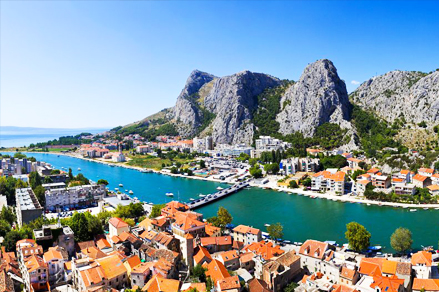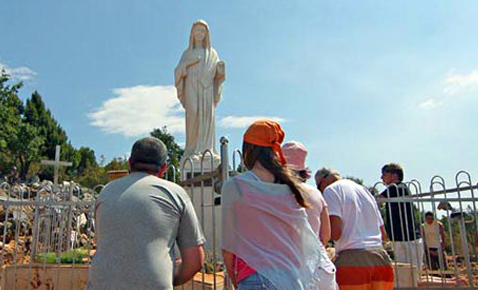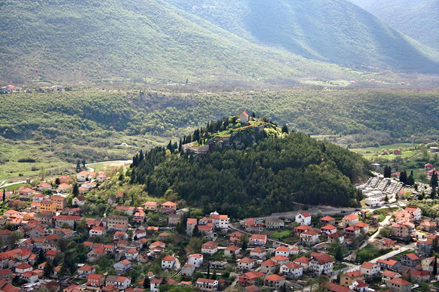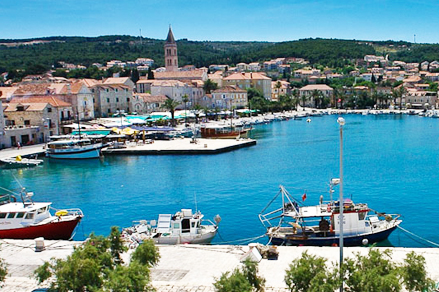INFORMATIONS ABOUT SPLIT

Split has historically changed its name several times, so we find him as Aspalatos or Spalatos, Spalatum, Spalato, intraregional transport. The origin of the name is derived from the plant broom, which grows in abundance here. According to another theory, the name is derived from the Latin word, like zooming in or out of the palace spalato = palatica, small palace (it.) Diocletian, the Roman emperor from 284 - 305, came from a modest family and his original name was Diokles. He is known as a great reformer of the Roman Empire as introduced arrangement called the Tetrarchy, which is the simultaneous government of four rulers. He was a persecutor of Christians, and he considered himself God. The vast palaces in the area of today's Split was built so as to spend "days of old age." Diocletian's Palace is the largest and best preserved late antique palace in the world. The east and west walls are 216 m long, 181 m south and 175 m north. In the northern part of the palace was located service and the military, while the south was the emperor's own quarters. In use was the plumbing that brought water from the river Jadro , used in part today. The latest theory argues that Diocletian's palace was never a place to rest, but a veritable factory for processing wool. Today, the complex preserved walls, three doors (Golden, Silver, Bronze and Iron).
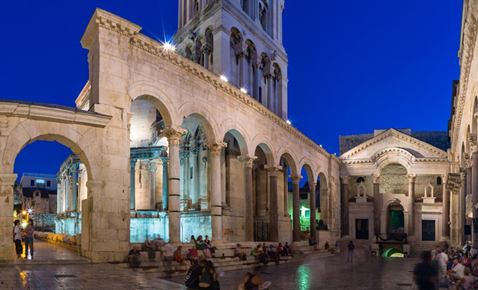
Diocletian's Palace is part of the historic center of Split, and it was included in the UNESCO World Heritage Site since 1979. The old city center - Besides the Palace, in the historic center of the city there are similar architecture worth seeing. Many tourists are considered as the jewel Split Dalmatia. Cathedral of St. Duje and Gregory of Nin Statue - located in the complex of Diocletian's Palace in Split. Today the Cathedral of St. Duje is a former mausoleum of Emperor Diocletian. When Christians settled in the palace were removed pagan idols and sarcophagus in which Diocletian was buried. Above the church was beautiful Romanesque bell tower, whose construction began in the 13th century. One of the most popular attractions is to climb to the top of the bell tower which offers a magnificent view of the entire city. At the base of the bell tower at the entrance to the cathedral, there are two carved lion, which is symbolically kept. Bishop Gregory of Nin advocated the use of national language and has left a deep mark in the history of Croatia. Today, his statue, a famous work of sculptor Ivan Mestrovic, is located in front of the Golden Gate of Diocletian's Palace. There is a belief that if you touch his tomb imagining a wish, the wish will certainly come true.

Important telephone numbers Call for urgent help: +385 112
Police: +385 192
Fire Service: +385 193
Ambulance: +385 194
Road assistance: +385 1987
Search and Rescue at Sea: +385 195
Information: +385 18981
Weather Forecast: +385 18166
Telephone directories: +385 11888
Telephone Directory International: +385 11888
Harbourmaster: 611 977
Meteo info: 347 404
Airport Split: 203 506
Croatia Airlines info & booking: 01 66 76 555
Jadrolinija Split: 338 333
Airport Tivat (TIV): +382(0)32 670 975
Bus station Makarska: 612 333
Railway station Split: 060 333 444
MOBILE PHONE OPERATORS:
091 VIP net
092 Tomato (property of the VIP 's)
095 Tele 2
097 bonbon (owner of the T -Mobile)
098 T-Mobile
099 T-Mobile (extended)

